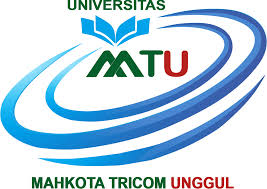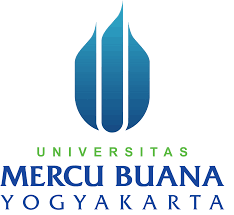Family Empowerment Method Modern Dressing Based to Increase Diabtes Mellitus Patients with Diabetic Ulcer
DOI:
https://doi.org/10.55927/ijsmr.v1i10.6602Keywords:
Family Empowerment, Modern Dressing, Quality of Life, Diabetic UlcerAbstract
Diabetic ulcer is lower extremity illness in diabetic patients with sensory, motoric, autonomic neuropathy, and or limbs blood vessel disorder as the characteristics. Patients with diabetic ulcer often experience psychological stress as the result of the infection of the ulcer itself or the operation procedure, thus negatively affects patients’ self-concept, self-worth, quality of life, physiological and psychological health, hope to recover, and their spirituality. This research aimed to recognize the effect of family empowerment method modern dressing based in inflating diabetic ulcer patients’ quality of life. This research utilized pre-experimental with one group pretest-posttest design. The population and sample in this research are diabetic ulcer patients. The sampling technique used was purposive sampling with the total of 53 respondents. The instrument used was WHOQOL (The World Health Organization of Quality of Life). The research found that patient’s QoL before family empowerment was given, the moderate QoL (Quality of Life) was 41 respondents (77.4%) and the good QoL was 12 respondents (22.6%). After the treatment using the aforementioned method, the good QoL increased to 28 respondents (52.8%), the moderate QoL became 7 respondents (13.2%) and the very good QoL increased as much as 18 respondents (34%). Wilcoxon analysis test resulted ρ 0,000, meaning that there was an effect of family empowerment method modern dressing based to patients with diabetic ulcer
Downloads
References
Aini. (2011). Hubungan Antara Dukungan Keluarga Dengan Kualitas Hidup Pasien Diabetes Melitus Tipe 2 di Poliklinik Penyakit Dalam Rumah Sakit Umum Pusat Fatwawati Jakarta. (tesis dipublikasikan). lib.ui.ac.id, Depok.
Brooker, C. (2009). Ensiklopedia Keperawatan. Jakarta : EGC
Decroli, E. (2019). Diabetes Melitus Tipe 2, Edisi 1. Padang: Pusat Penerbitan Bagian Ilmu Penyakit Dalam Fakultas Kedokteran Universitas Andalas.
Efendi, F., Tristiana, R. D., & Priyantini, D. (2020). Family empowerment model based on belief and health related quality of life among housewives with HIV/AIDS. Systematic Reviews in Pharmacy, 11(5), 246-251.
Friedman, M. (2010). Buku Ajar Keperawatan Keluarga : Riset, Teori dan Praktek Edisi ke-4. Jakarta : EGC.
Honan, Linda. (2019). Focus On Adult Health Medical-Surgical Nursing Second Edition. Philadelphia: Wolters Kluwer.
International Diabetes Federation. (2019). Tentang Diabetes. Diambil dari https://www.idf.org/aboutdiabetes.html
Kementerian Kesehatan Republik Indonesia. (2018). Laporan Hasil Riset Kesehatan Dasar 2018. Jakarta: Badan Litbangkes.
Kozier, B., & Erb, G., (2009). Buku Ajar Praktik Keperawatan Klinis. Alih. Bahasa: Eny Meiliya, Esty Wahyuningsih dan Devi Yulianti. Jakarta : EGC.
Lemone, Priscilla, et al. (2017). Medical-Surgical Nursing. Volume 1-3: Critical Thinking For Person_Centered Care. Australia: Pearson Australia Yusra, Townsend, Marry C. & Morgan, Karyn I. (2018). Psychiatric Mental Health Nursing: Concept of Care In Evidence-Based Practice. Philadelphia: F. A.Davis Company.
Mukhlis, H., Kristianingsih, A., Fitrianti, F., Pribadi, T., Kumalasari, D., Febriyanti, H., & Maseleno, A. (2020). The effect of expressive writing technique to stress level decrease of new student at Al-Falah Putri Islamic Boarding School, Margodadi, Tanggamus. Annals of Tropical Medicine and Health, 23, 192-200.
Masters, K. (2014). Nursing theories: A framework for professional practice. Jones & Bartlett Publishers.
Notoatmodjo, S. 2007. Metode Penelitian Kesehatan. Rieneka Cipta, Jakarta Padila. 2013. Buku Ajar Keperawatan Keluarga. Yogyakarta : Nuha Medika
Nurhayati, C. (2022). Hubungan Tingkat Pengetahuan Tentang Diabetes Melitus, Self Management Dengan Kualitas Hidup Pada Pasien Diabetes Melitus Tipe 2. Journal of Nursing and Health Science, 1(2), 58–65.
Rahayu, E., Kamaluddin, R., & Sumarwati, M. (2014). Pengaruh Program diabetes self management education berbasis keluarga terhadap kualitas hidup penderita diabetes melitus tipe II di wilayah Puskesmas II Baturraden. Jurnal Keperawatan Soedirman, 9(3), 163–172.
Reni Yulinda Dimu. (2020). Pemberdayaan Perempuan Merawat Pasien Diabetes Melitus Tipe 2 Dalam Keluarga Untuk Mencegah Komplikasi Ulkus Kaki Diabetik Dengan Pendekatan Supportive Edukatif. Malaysian Palm Oil Council (MPOC). http://journal.um-surabaya.ac.id/index.php/JKM/article/view/2203%0Ahttp://mpoc.org.my/malaysian-palm-oil-industry/
Roifah, I. (2017). Analisis hubungan lama menderita diabetes mellitus dengan kualitas hidup penderita diabetes mellitus. Jurnal Ilmu Kesehatan, 4(2), 7–13.
Sunarti, E. 2008. Ekologi Keluarga : Sejarah, Konsep, dan Tantangan Dalam Soeryo Adiwibowo. 2008. Ekologi Manusia. Fakultas Manusia. Institut Pertanian Bogor
Sumara, R., Ns, S. K., Kep, M., Nurma Fajar, N., & Erliana, D. (2018). Penggunaan Lumatan Daun Bunga Sepatu (Hibiscus Rosa-Sinesis L) Untuk Penyembuhan Luka Insisi Pada Tikus Putih (Rattus Norvegicus Strain Wistar).
Downloads
Published
How to Cite
Issue
Section
License
Copyright (c) 2023 Retno Sumara, Siswanto Agung Wijaya, Diah Priyantini, Aries Chandra Anandita, Sevia Ofarisma N, Seto Sudirman

This work is licensed under a Creative Commons Attribution 4.0 International License.




















